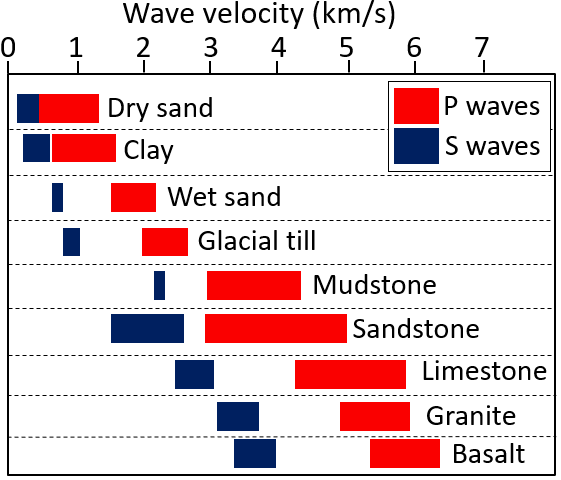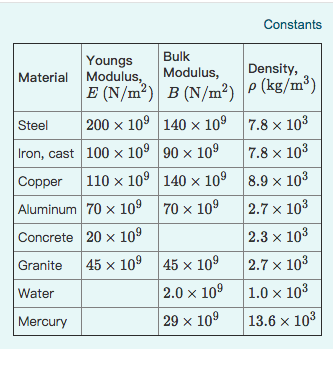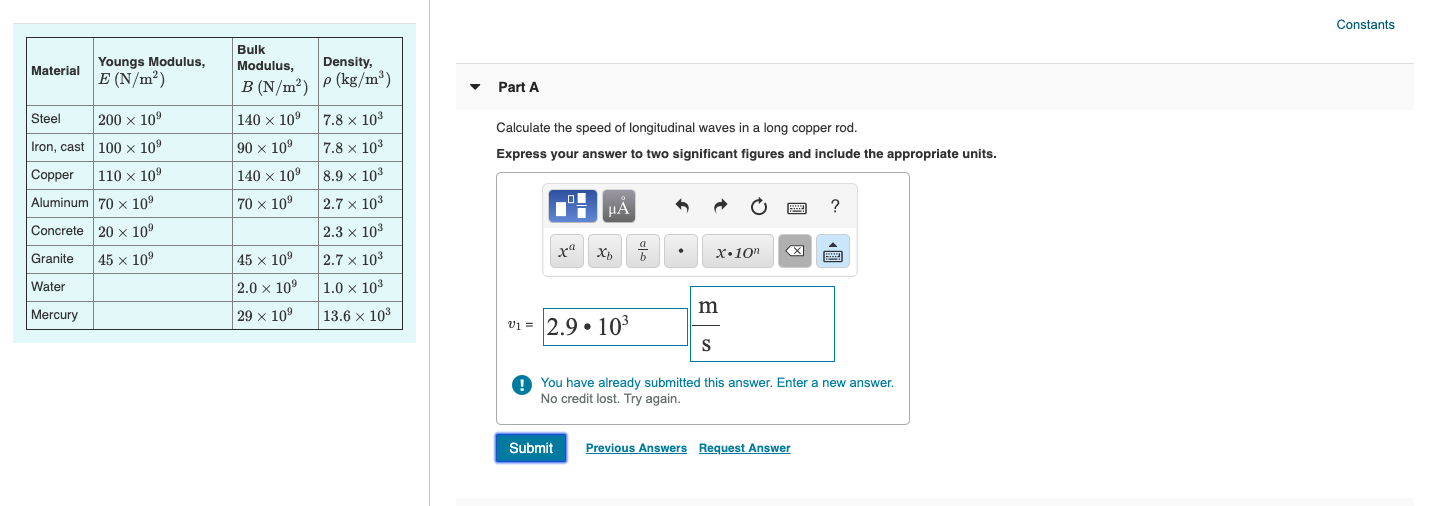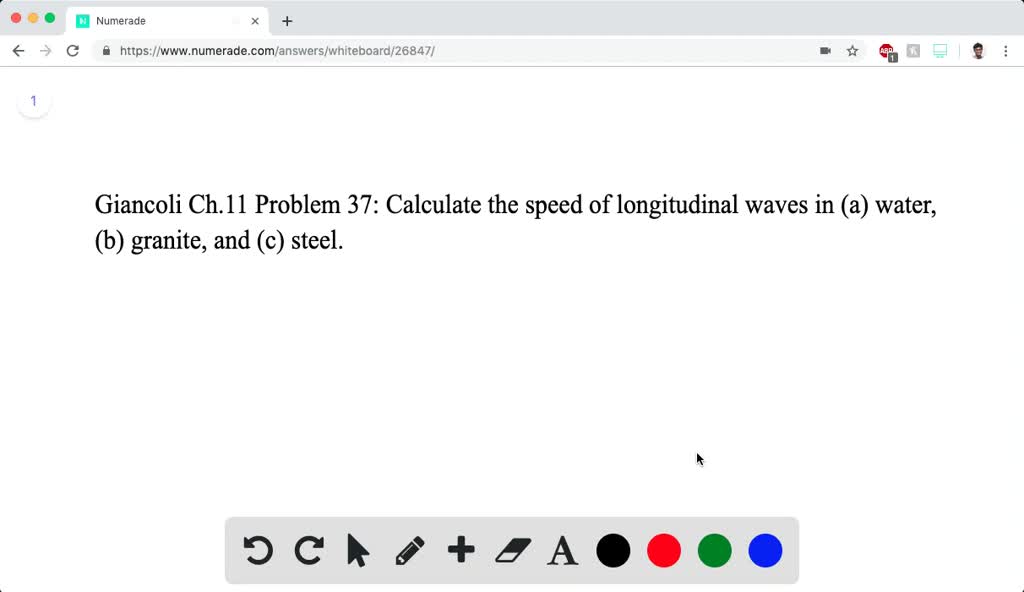The fastest speed as shown below in the image is the propagation through the earth s core near 14 km s though it s generally referenced as approximately 13 km s.
Speed of p waves in granite.
Each wave has a distinct particle motion elastic deformation and speed of propagation.
P waves travel faster than other seismic waves and hence are the first signal from an earthquake to arrive at any affected location or at a seismograph p waves may be transmitted through gases liquids or solids.
Primary waves p waves.
The speed of longitudinal waves traveling in a long solid rod is given by v y p where y is young s modulus and is the density of the solid.
Whereas body waves travel through a medium surface waves travel along surfaces and interfaces.
Both components of earthquakes travel slower in less rigid material such as sediments.
Velocity of extensional waves along a rod with diameter much smaller than the wavelength in wood the speed of sound varies with grain direction because the transverse modulus of elasticity is as little as 1 20 the longitudinal value.
If a disturbance has a frequency of 40 hz what is the wavelength of the waves it produces in a an aluminum rod and b a copper rod.
The main wave types are body waves p and s waves and surface waves rayleigh and love waves.
In coarse granites the directional differences in capillary absorption and p waves velocity can be explained by any of the fractographic parameters.
The speed of sound across the grain is about one fifth to one third of the longitudinal value.
The p waves from an earthquake arrive first but because of their small amplitudes don t do as much damage as the s waves and surface waves which follow.
The bulk modulus of granite is greater than its shear modulus.
The speed of p waves and s waves increases as they travel deeper into the earth s mantle.
A p wave or a primary wave is one of the two main types of elastic body waves called seismic waves in seismology.
Typical speeds are 330 m s in air 1450 m s in water and about 5000 m s in granite.
The speed of p waves is relatively slow through some looser solids like scree smaller rocks and substances that are mostly solid like soil.
They travel through the earth in curved paths but they change direction suddenly when they pass through.
P waves depend upon the bulk modulus of elasticity for the material as well as its density and the wave speed in a solid material like granite can be about 5000 m s.
In air they take the form of sound waves hence they travel at the speed of sound.


















